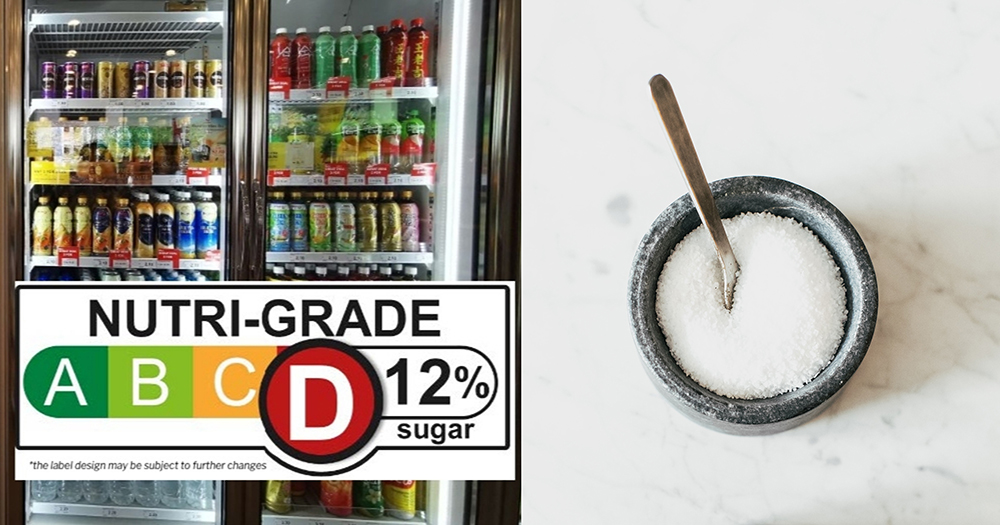 The government is looking at rolling out a labelling measure to indicate the level of sodium in food in an approach that is similar to, or better than, the "Nutri-grade" labels used in the efforts to lower sugar intake levels of Singaporeans.
The government is looking at rolling out a labelling measure to indicate the level of sodium in food in an approach that is similar to, or better than, the "Nutri-grade" labels used in the efforts to lower sugar intake levels of Singaporeans.
Senior Parliamentary Secretary for Health Rahayu Mahzam revealed the information when addressing questions from Member of Parliament (MP) Lim Wee Kiak on the government's efforts to address sodium overconsumption.
Sodium intake in Singapore is "excessively high"
Rahayu highlighted that sodium in Singapore comes mainly from added salt, sauces and seasonings, such as soya sauce, dark sauce, fish sauce and chilli sauce.
Singaporeans consume them the most when they eat out, she said.
In addition, she quoted Health Promotion Board's (HPB) National Nutrition Survey 2022, which showed that Singaporeans' sodium intake is "excessively high".
Overconsumption of sodium increases the risk of hypertension, which can lead to diseases such as heart attack, stroke and kidney failure, she said.
"We need to cut down on our consumption of sodium urgently," she added.
HPB is offering grants to salt and sauce suppliers to reformulate their products
Currently, the government is addressing the issue by offering grants to salt and sauce suppliers to reformulate their products under the Healthier Ingredient Development Scheme, Rahayu highlighted.
This has resulted in greater accessibility to lower-sodium alternatives and reduced the wholesale prices of lower-sodium salts and sauces.
The prices of such salts, sauces and seasonings supplied to food operators are comparable to those of regular versions.
The government is also looking at how it can enhance existing schemes further to narrow the price difference, especially between lower-sodium sauces and their regular version, she said.
Currently, HPB has garnered the commitment of 15 major manufacturers and food operators — representing over 30 per cent of the retail market for sauces and seasonings and 10 per cent of the food and beverage (F&B) market share — to increase the variety and demand for lower-sodium ingredients.
Encouraging hawkers and restaurants to use lower-sodium ingredients
The government will also engage other stakeholders, such as hawkers, restaurants, caterers and chefs, to promote the adoption of lower-sodium ingredients.
Rahayu added:
"We will have to explain to them the need to cut our sodium intake, introduce them to lower-sodium ingredients as well as provide them with samples that they can try out so that we can get them to use these products."
Rahayu also voiced her hope for the stakeholders to help explain to the public that salt is an acquired taste.
She explained that if too much salt is consumed over time, a person's taste buds will become accustomed to it and fail to taste other natural ingredients.
The government is therefore planning a series of engagement sessions with these parties, including with the industry and professional associations.
Rahayu highlighted that thus far, 350 hawkers, coffee shops and food courts, along with 150 caterers, are already using lower-sodium products.
HPB to step up public education campaign
HPB will also step up its public education campaign.
In Singapore, "less salt often means more taste" as this allows someone to appreciate the natural flavours of spices and other ingredients typically used in local cuisine, Rahayu said.
HPB will conduct more activities, such as food sampling at supermarkets, in its efforts to increase the receptiveness of Singaporeans to using lower-sodium ingredients and change their perception that more salt and sauces are needed for flavourful dishes, Rahayu added.
Will sodium labels become mandatory?
Lim asked if the government will make it mandatory to label food products to show that they are either lower in sodium or warn that a product contains high sodium levels.
Rahayu replied, "I think we're going to look at the market and see how we can do this better."
She also said that if the government were to roll out sodium labels, it will come in phases and operators will be given time to prepare for the change.
Top left photo by Zhangxin Zheng, right photo via Unsplash/Josh Massey

If you like what you read, follow us on Facebook, Instagram, Twitter and Telegram to get the latest updates.


